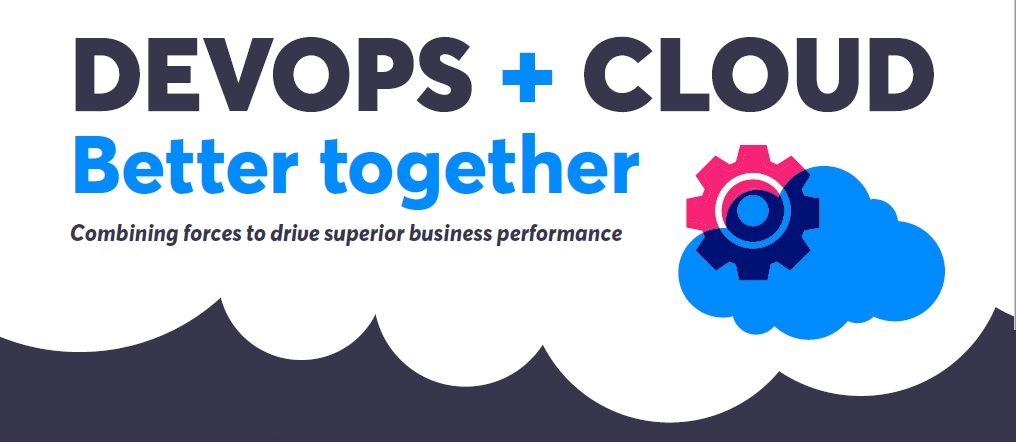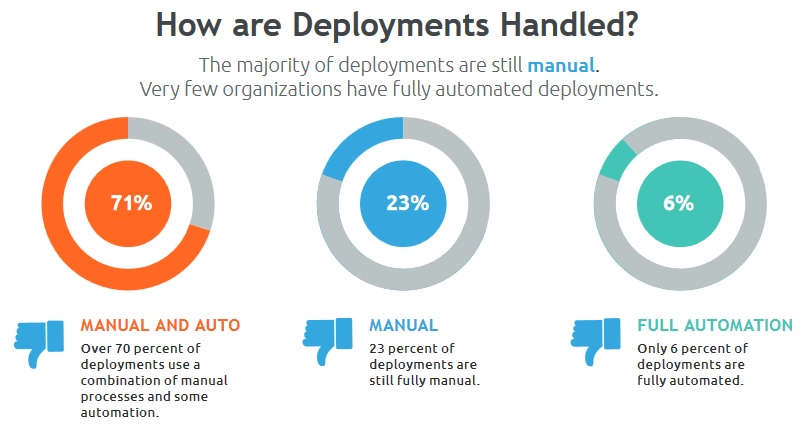There are many options when it comes to container orchestration platforms and services. Figuring out which one is best for a particular organization’s needs and applications can be a challenge. Which platform for containerization you choose can significantly influence your business success, so the selection process should be carefully considered ...
DevOps
A powerful tool for simplifying DevOps is containerization, which delivers a convenient form of application packaging, combined with the opportunity to automate certain IT provisioning processes. With containerization, DevOps teams can focus on their priorities — the Ops team preparing containers with all needed dependencies and configurations; and the Dev team focusing on efficient coding of an application that can be easily deployed ...
DevOps encourages communication and collaboration between development and operations teams. Achieving greater synergies between the Dev and Ops teams doesn't happen overnight, but it is possible to fast track the process with the right technologies in place. One such technology is IT automation ...
Being able to deploy distinct code elements quickly, matched with the ability to deploy the next release version or the previous version, facilitates moving forward, even on failure. The small program unit minimizes the production impact upon failure — maybe only a few people experience the problem instead of a large set of application users when large code deployments go wrong. Besides implementing small code segments, there are two additional reasons why fail forward has proven successful: continuous integration and testing ...
Compiling, packaging, and deploying large applications at once into production are some of the major reasons for disgruntlement between development and operations. The release causes huge problems for the business and customers, with operations under the gun to find and rectify the failure — often with no development assistance. That division ends with DevOps ...
A common belief within DevOps circles is that automation not only enables greater frequency of delivery and deployment, but improves its overall success rate. Whenever manual intervention is required, the chances of errors creeping in increases. Human error is a significant factor in many an outage, after all ...
DevOps and NetOps are both far more generous in their opinion of the other with respect to prioritization of efforts than traditional archetypes purport them to be, and they have a lot in common – even though they may disagree on details – according to a new survey by F5 ...
Test teams feel the need to adopt DevOps, but that migration is not always seamless, according to a new survey by LogiGear. That may be because 25 percent of respondents said their Ops/IT team is always helpful to the test team and its needs; 37 percent said Ops teams regularly help bring about good test environments; 27 percent said Ops can be "slow or difficult" ...
A Forrester survey confirmed what high-performance organizations have already said – DevOps is here to stay. Diving into the details, however, the study also shows that the DevOps journey may be in for a rude awakening. Companies in all industries are embracing DevOps for superior productivity, but many organizations struggle to overcome barriers that prevent them from translating these programs into improved business results ...
DevOps brings Development and Operations together with the sheer objective of ensuring quality and enabling faster time to market. However, what happens to QA in this scenario? How does the Testing team fit in? Let's ponder on this further and understand the role of QA and Testing in the DevOps world ...
In Part 2, I'll dive into some findings from CollabNet's outreach to industry analysts. I asked them about the greatest challenges facing enterprises venturing into the world of DevOps and to touch on what lies ahead for the future of the DevOps movement ...
There is no "right" culture for DevOps, but characteristics such as open communication, high cooperation, collaboration, respect, and trust are essential. If your organization does not have these characteristics, they must be developed. Culture is learned, not inherited. It must be genuinely nurtured by everyone from executive management on down the line. Here are some hacks to help develop a positive DevOps culture ...
Thanks to cloud computing, businesses have moved away from siloed departments to a DevOps approach where IT teams and software developers can work together with greater ease. As a result, companies are now able to innovate faster and adapt to changes with greater ease and efficiency. In this blog, we'll explore a few ways in which an optimized cloud strategy and implementing DevOps as a culture could transform IT departments ...
In a movement that has gained momentum as quickly as DevOps has, it's always good to stop from time to time and evaluate where we are, where we have come from, and where we are going. We asked four industry experts some questions about the progress of ALM and DevOps ...
It's easy to ignore downtime. But ignoring downtime is a surefire way to upset your customers and your colleagues. More and more, teams need to think about shipping stellar experiences. Proper incident response is a great place to start ...
Whether through formal methods such as classroom or virtual training, job shadowing, and mentoring; or through informal methods such as team discussions or presentations, teaching needs to be a frequent element of team integration. It is a given that IT and business teams have difficulty understanding each other without a common taxonomy. Even teams within IT often fail to understand each other ...
Although DBAs fortunately have the rare ability to bridge the gap between development and operations, they have been detrimentally overlooked in many companies that deploy DevOps practices. A DBA's ability to interrogate code and construct a resilient, well–performing database environment uniquely defines the capabilities needed for DevOps – leaving me perplexed about why DBAs were not one of the first operations team members asked to join the DevOps movement ...
As trends like cloud computing and DevOps become the de facto standard, organizations are increasingly looking for next-generation analytics tools and services that provide continuous intelligence to help them build, run and secure modern applications, and accelerate their journey to the cloud, according to a new study with UBM Technology titled The New Normal: Cloud, DevOps and SaaS Analytics Tools Reign in the Modern App Era ...
A recent survey, conducted by Forrester and commissioned by Compuware, showed 96 percent of new business initiatives involve the mainframe. However, the platform is not without challenges. The survey also revealed frustration and concern among development leaders, particularly when it comes to their team's ability to accommodate the speed and agility required to compete in today's digital market ...
Driven by the adoption of cloud and modernization of application architectures, DevOps practices are fast gaining ground in companies that are interested in moving fast – with software eating everything - between "write code and throw it across the wall" to creating more pragmatic mechanisms that induce and maintain operational rigor. The intent behind DevOps (and DevSecOps) is quite noble and excellent in theory. Where it breaks down is in practice ...
There might be many people across organizations who claim that they’re using a DevOps approach, but often times, the “best practices” they’re using don’t align with DevOps methodologies. They can say what they do is “DevOps”, but what we’ve found is that many are actually not following basic agile methodology principles, and that’s not DevOps ...
Here in the software world, we are beyond the beginning of technology advancements and we continue to accelerate faster than organizations are able to adapt toward further innovation. A simple truth, though: Organizations must find a way to future proof themselves or face some tough realities ...
Everybody loves DevOps. In fact, DevOps is the hottest date in IT. That's because DevOps promises to satisfy the deepest longings of digital business — including fast execution on innovative ideas, competitively differentiated customer experiences, and significantly improved operational efficiencies ...









